- Home
- slideshows
- miscellaneous
- 14 surprising and bizarre photos from oilfield workers reveal what crude oil actually looks like when it comes out of the ground
14 surprising and bizarre photos from oilfield workers reveal what crude oil actually looks like when it comes out of the ground
Some oil looks like green juice, like this bottle from the Bakken oilfield in North Dakota.

Here's some more greenish crude in a container called a "thief."
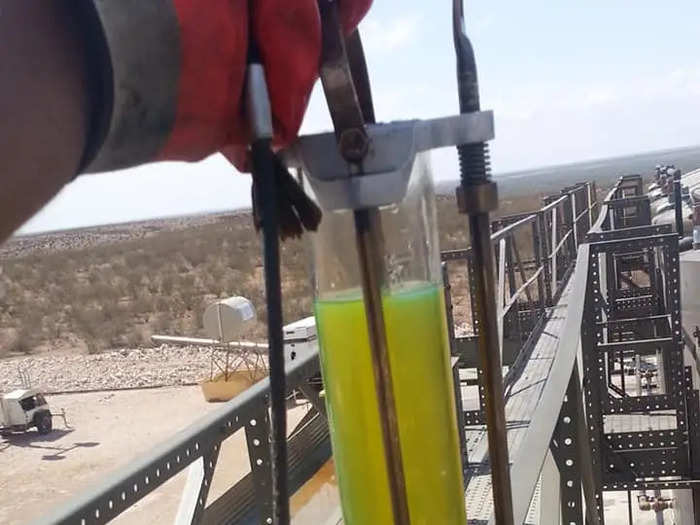
This crude from West Texas has a low specific gravity, said Ramiro Martinez, another group member, who shared the photo. That's why the liquid is almost translucent.
Oil workers use containers like these to test the oil's relative density, temperature, and other properties before it goes into a pipeline.
Sediment can build up in the oil storage tank, which you can see here.
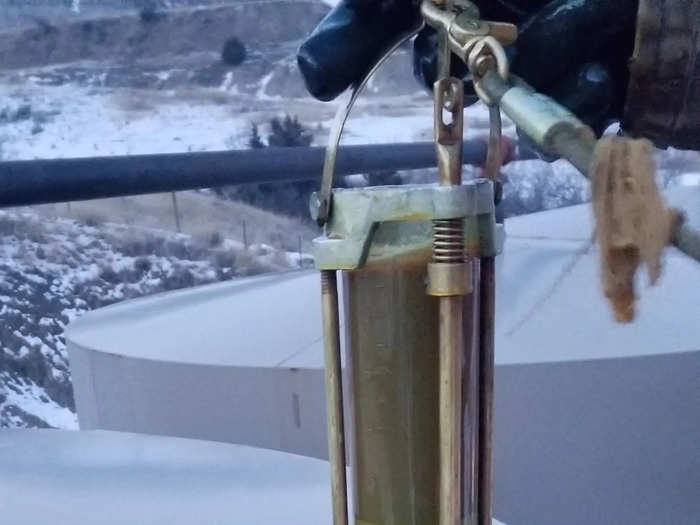
"When transporting the oil from the well to the pipeline by truck, we need to test the oil to make sure it's good quality," Ted Farni, an oil buyer, wrote on Facebook. "We use tools to get samples and test temperature and gravity."
In this photo, the lighter-green at the bottom of the thief is sediment.
Here's another green smoothie from North Dakota.
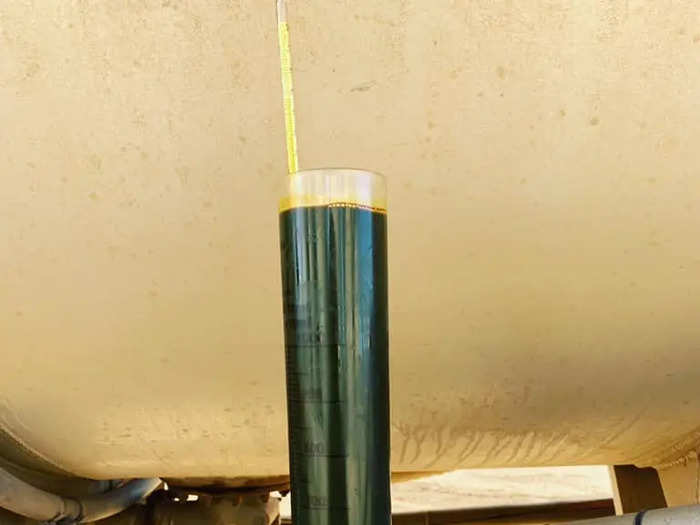
The tool sticking out measures the oil's specific gravity.
Crude can also be thick and waxy, like this oil from Utah.
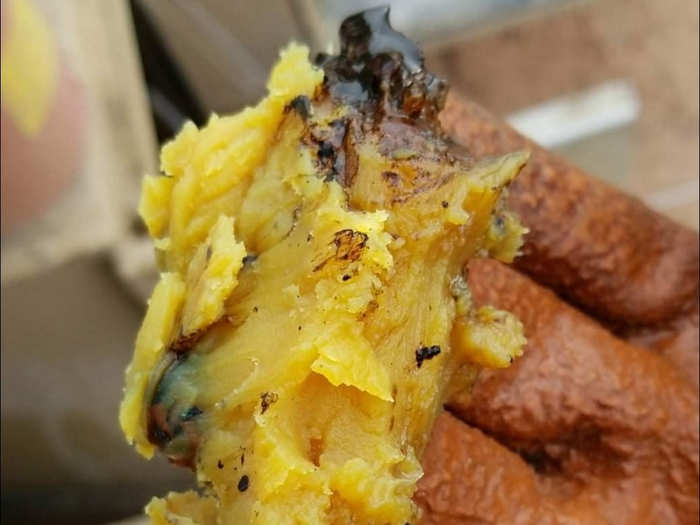
Crude oil that has a high proportion of paraffin — a type of hydrocarbon — is thick and waxy, especially at low temperatures. This is an example of a heavier crude with a much higher relative density or higher specific gravity.
"It causes huge problems for us," Badrouchi said. "It's like wax. The oil with a lot of paraffins is so heavy it can clog the well."
To transport waxy oil, you have to keep it hot.
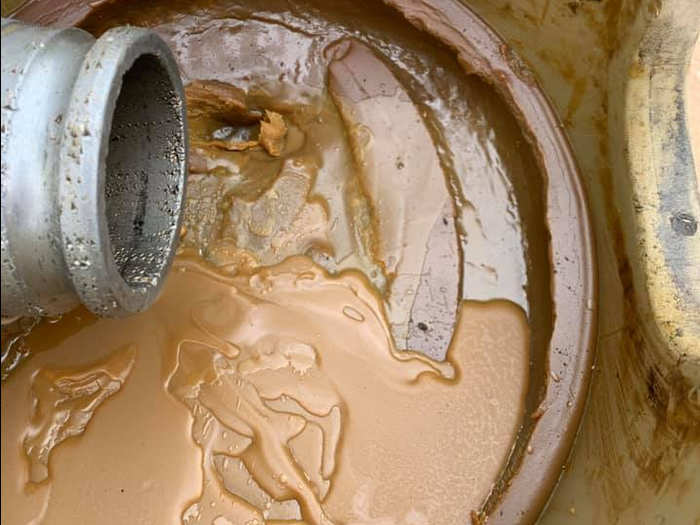
This crude is from Roosevelt, Utah, according to Micah Tobias Barker, an oil truck driver who shared the photo.
"All the crude out there is completely saturated with wax to the point that all the tanks are insulated and the oil has to be kept hot to transport," he wrote on Facebook. "We aren't allowed to load it unless it's between 140-180 degrees Fahrenheit."
'This is good, clean oil, but high paraffin'
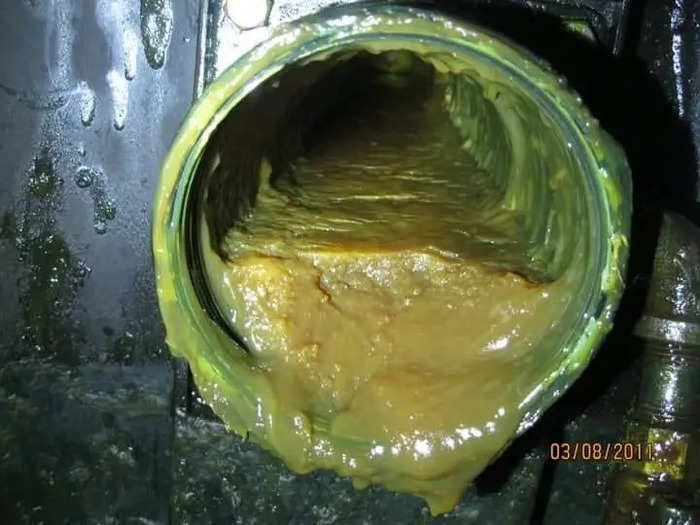
Here's some more waxy oil, this time from Montana.
"Some of the older wells around Killdeer [North Dakota] had so much paraffin in the oil that if you didn't get it off your truck in time in winter you were stuck with basically a candle inside the tank," Steven Unterseher, an oil worker who moderates the Bakken oilfield discussion group, wrote on Facebook.
Other crude is yellowish, like this one from West Texas...
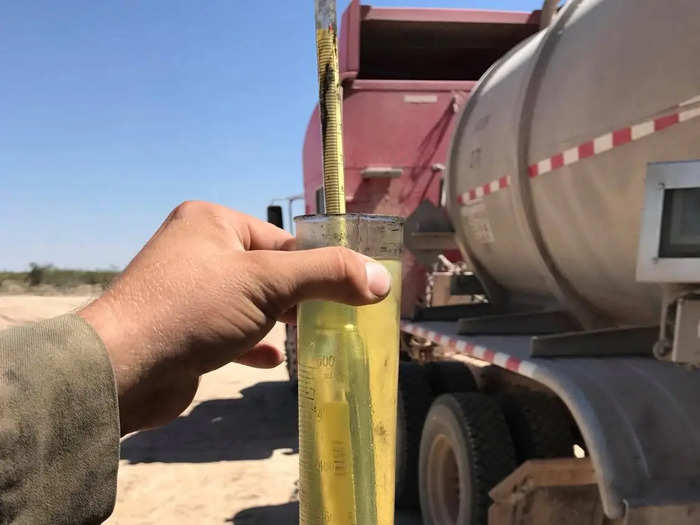
This crude is much lighter, which is why it looks nearly transparent.
"Light crude oil contains a large amount of liquid natural gas," Badrouchi said. Liquid natural gas is essentially natural gas — namely, methane — that's been cooled down or pressurized into a liquid form.
...or even clear, such as this bottle, also from West Texas.
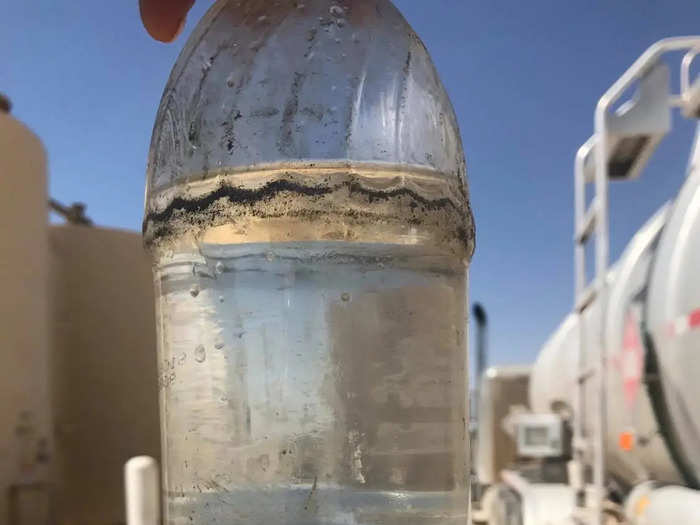
The bottom is water and the top is oil.
Crude oil can take on an orange color, too.
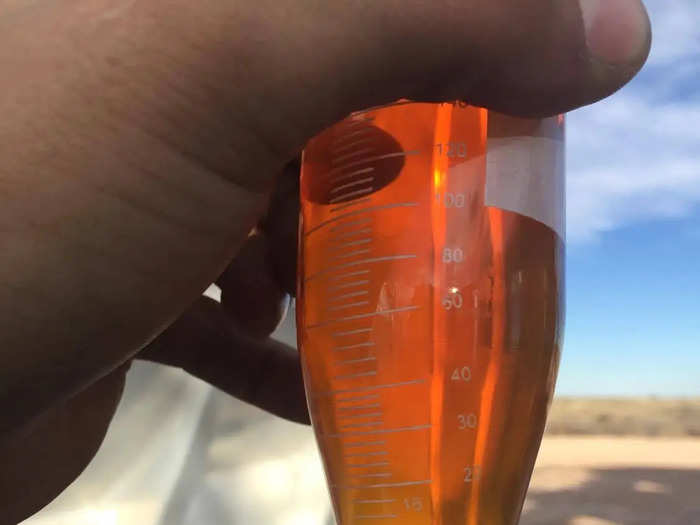
When you see crude in a container like this it indicates that it's been mixed with a solvent and spun in a centrifuge. That allows you to see how much water and sediment the oil contains — in this case, there's a bit of each at the lower tip.
Water can "accumulate and freeze pipes eventually down the line," Farni said. "Also, if the oil is 2% water or dirt the buyer wants a discount. In volume, it adds up."
Or it can even look red.
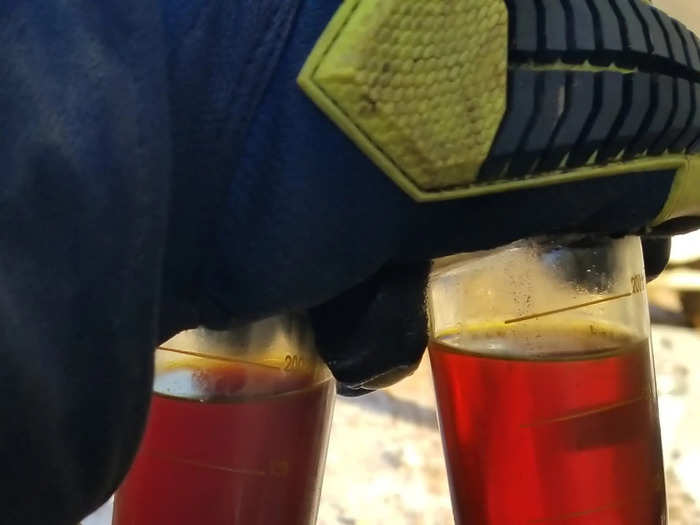
"Some of the oil south of the [Missouri River] is this magnificent fluorescent red-orange-yellow-green, all at the same time," Farni said. "It's weird and I'm not sure why other than just the location."
This is another light oil that's been spun in a centrifuge.
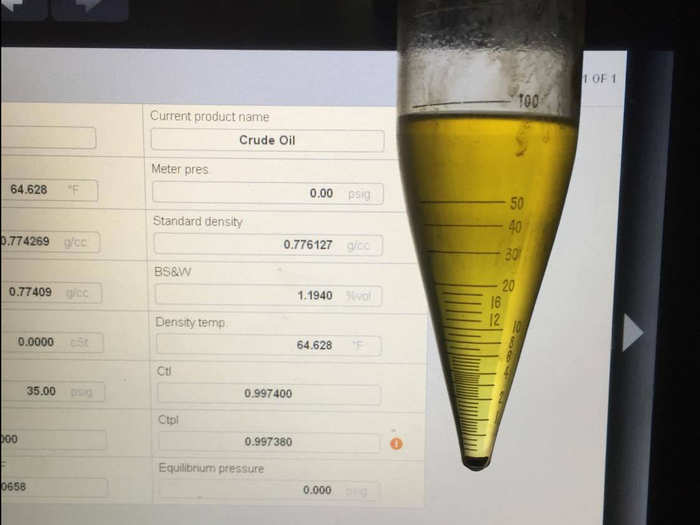
Again, you can see a small amount of sediment at the lower tip.
This turquoise crude comes from a natural gas plant in Texas.
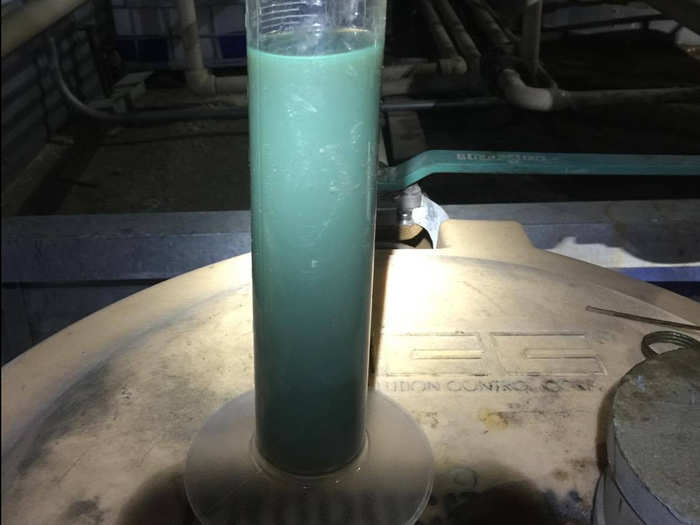
This is a shot of what's called condensated oil, which comes from a natural gas plant in Midland, Texas.
Badrouchi says that some natural gas is "wet," meaning that it has a lot of condensation. The condensation is high-gravity crude oil, he said. "This is very high quality because it's very light," he said.
Even from just two days of hauling oil, you can see a whole range of colors.
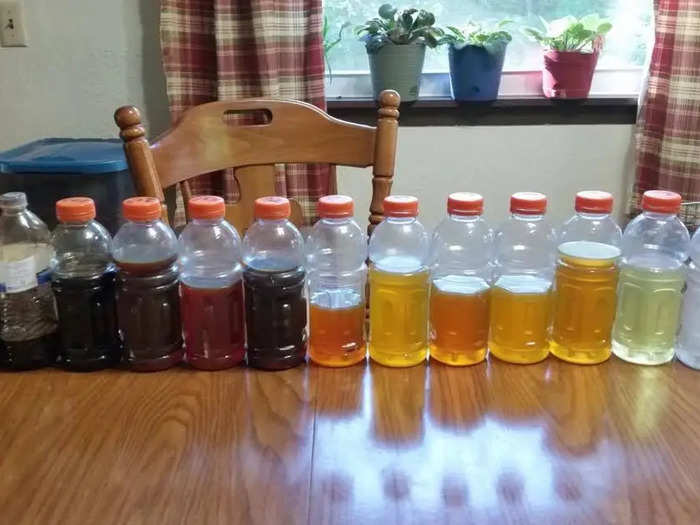
"Crude oil is actually some pretty interesting stuff," Rich Sorensen Junior, who's also part of the oilfield group, wrote on Facebook. "I just wish people understood it better and how crucial it is to life as we know it."
Popular Right Now
Advertisement